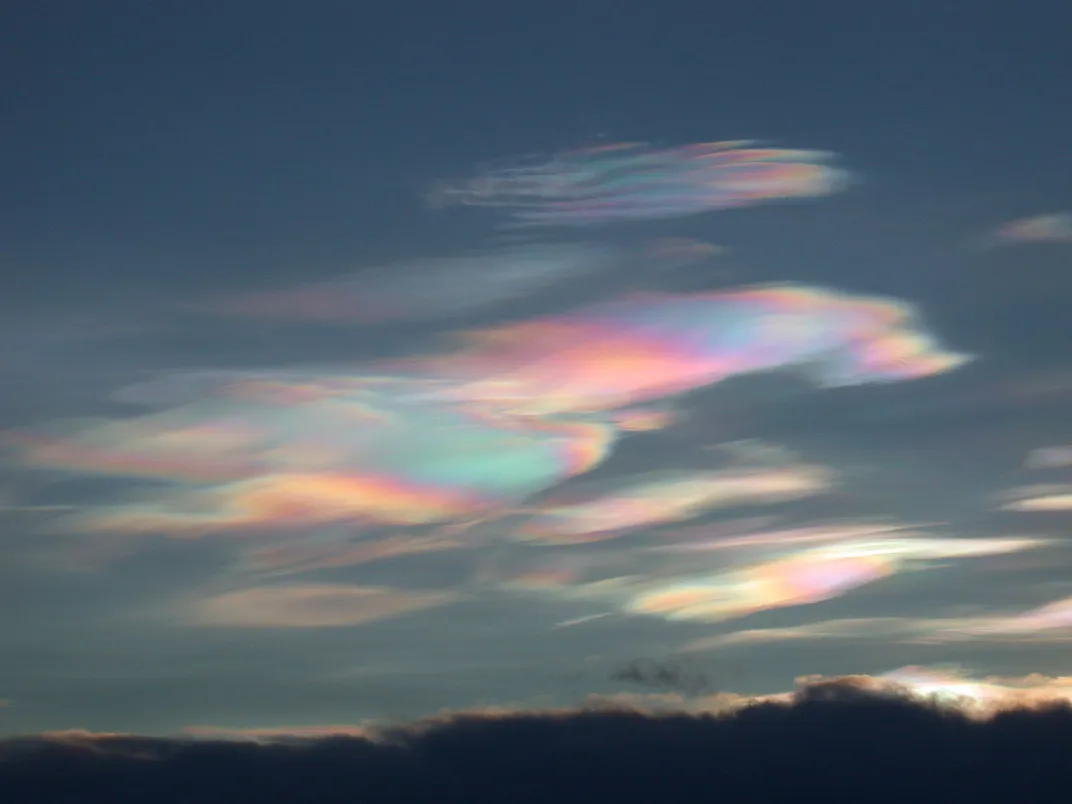“The Scream” Might Have Been Inspired By a Rare Type of Cloud
Did mother-of-pearl clouds stoke a painter’s angst?
/https://tf-cmsv2-smithsonianmag-media.s3.amazonaws.com/filer/d7/80/d7805a32-bd78-4a87-bb23-59bfca736800/the_scream.jpg)
Edvard Munch’s “The Scream” is iconic—but it's also mysterious. Why is the stressed-out subject screaming, anyway? A Norwegian scientist has an intriguing new theory, reports the BBC’s Jonathan Amos: Perhaps the scream was inspired by an atmospheric phenomenon called mother-of-pearl clouds.
The rare clouds got their nickname from the abalone shells they resemble. Also known as nacreous or polar stratospheric clouds, they’re iridescent and pretty unusual. They form in northerly latitudes during the winter when the dry stratosphere cools down.
Normally, the stratosphere is so dry that it can’t sustain clouds, but when temperatures get beneath about 108 degrees below zero, all of the scant moisture in the air gets chilly enough to form ice crystals. When the sun hits the perfect place along the horizon, those ice crystals reflect its rays, causing a shimmering, pearly effect.
Helene Muri, a meteorologist and cloud expert, recently gave a talk at this year's European Geosciences Union General Assembly about how the wavy mother-of-pearl clouds could be portrayed in Munch’s painting. “As an artist, they no doubt could have made an impression on him,” she tells Amos.

Though the sky in "The Scream" is outlandish, the painting is widely believed to be autobiographical. Munch himself struggled with tragedy and fragile health that scholars believe could have informed the painting’s colors and themes. In a poem in his diary, Munch recalls the sky turning “blood red” after he felt “a wave of sadness” while walking with some friends. He put a similar poem on the frame of one of his versions of the painting.
That description has prompted other scientists to use natural phenomena to explain the origin of the painting. In 2004, physicists theorized that the clouds were created when Krakatoa erupted in Indonesia—an event that caused spectacular sunsets throughout Europe. But it’s tricky to ascribe a particular date, time, or event to a piece of art, especially since painting is by nature so subjective.
It turns out that mother-of-pearl clouds have a dark side: As Nathan Case explains for The Conversation, they cause the ozone layer to further break down by stoking a reaction that produces free radicals, which can destroy atmospheric ozone. That’s something to scream about—but until scientists invent artistic time machines, their theories about the weather events that precipitated history’s greatest paintings will remain mere suppositions.
/https://tf-cmsv2-smithsonianmag-media.s3.amazonaws.com/accounts/headshot/erin.png)
/https://tf-cmsv2-smithsonianmag-media.s3.amazonaws.com/accounts/headshot/erin.png)